The numbers on Roger Veitch’s new 27ft Hardtop are so sexy we had to check the specs twice – and when it pulled into port it proved an absolute face melter! What’s more, beneath that white gelcoat is a laminate that leaves most Australian boat builders in Roger’s wake.
Down East Gippsland way, a procession of Dodge Rams and Silverados patiently wait for their trailer loads of freshly minted, heavy, deep vee glass hulls to roll off the production line. At factories like Whitepointer, Bass Strait Boats and Cootacraft, there’s no shortage of punters signed up for a hull with lines borrowed from the likes of Formula, Hunt, Haines and Apache.
Hell, why not? These heavy-duty, hand-laid and chopper gunned hulls have stood the test of time — and the rigours inflicted on them by abalone divers and commercial operators in the rough waters of Bass Strait. They’ve earned their stripes.
But Roger Veitch has come up with an alternative. In Bairnsdale, amid the throng of heavy-glass craftsmen, Roger has spent the past six years painstakingly creating the Veitch 27. It’s not just a whole new shape, the Veitch is crafted with a technique called vacuum bagging — or resin infusion — a process perfected by Yanks, the most prolific boat builders in the world.
FAST LEARNER
At the age of 14, Roger and his old man built a sailing boat out of cedar and spruce. After cruising around the Hume Weir for a while, Roger decided a nautical career was the go. Leaving school, he did an apprenticeship at Hart Marine. When it comes to go-fast carbon fibre technology for ocean racing, Hart is at the top of the food chain. “These boats have massive power-to-weight ratios”, says Roger. “They have to be strong, light and efficient to take on massive seas.” He got the taste for composite structures and then snagged a job building racing car parts. But Roger grew tired of his carbon creations ending up on the scrap heap at the end of race week. He also missed the sea breeze on his face.
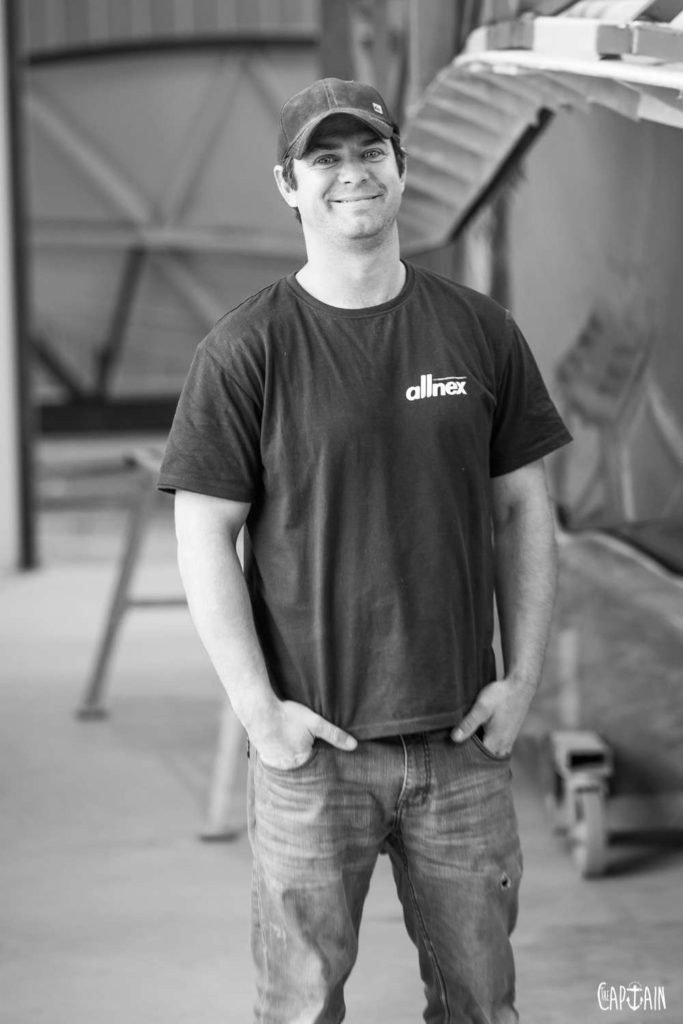
So he turned his compass towards building a fast, lightweight fishing boat — but one with the construction smarts of a racing yacht. “I wanted to create a beautiful, high-tech game boat.”
ROGER OPERATES IN A VACUUM
Inspired by the Yanks, Roger vacuum bags (resin infuses) his boats.
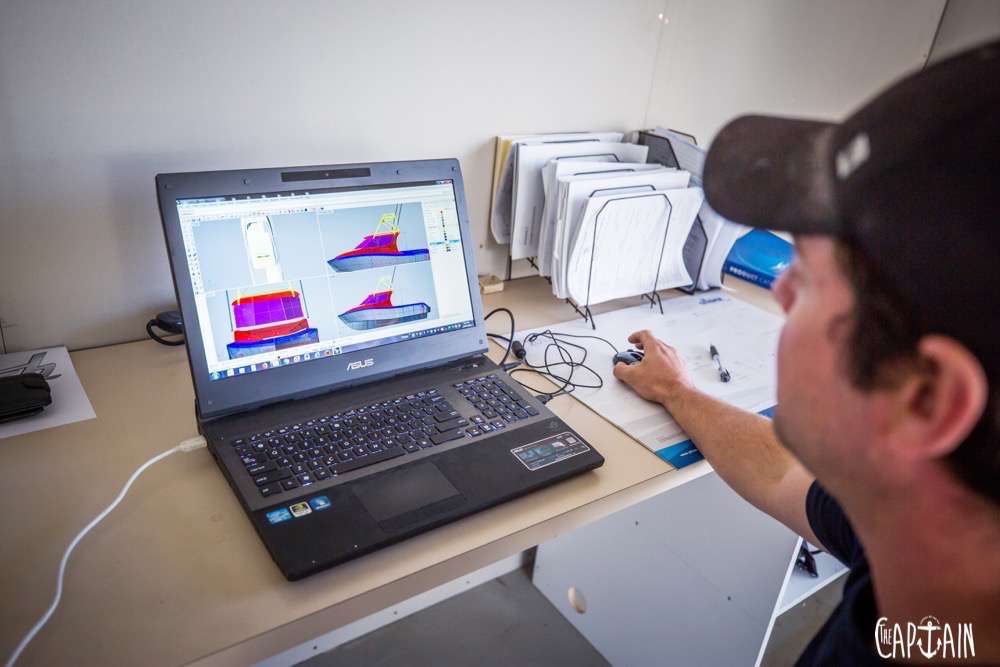
“American boat building is really something that inspires me. Those guys have pushed and perfected boat construction. They’re just miles ahead of what’s happening over here.”
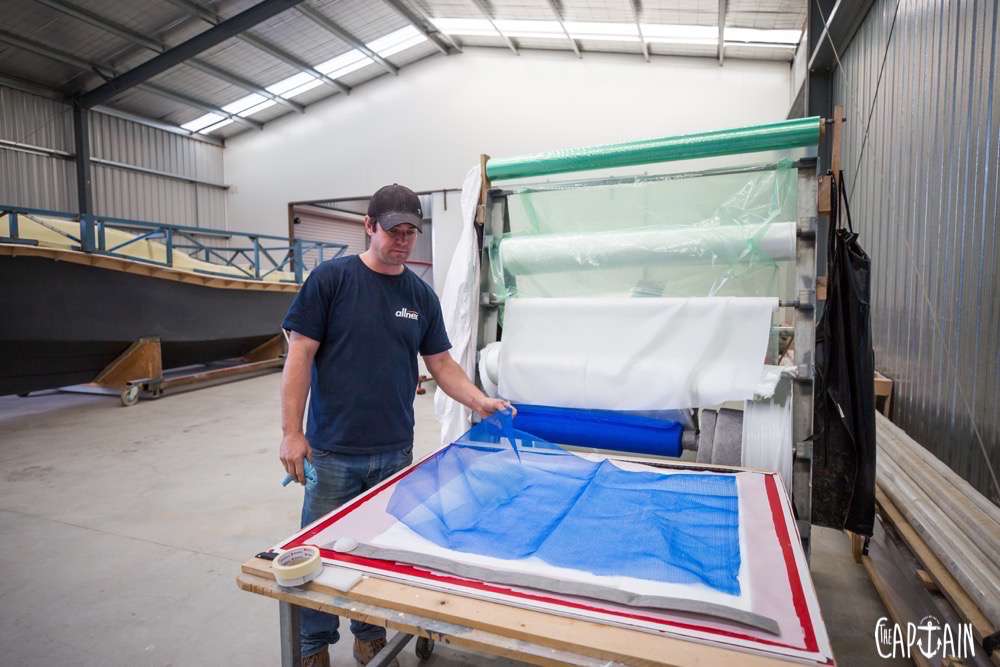
Roger describes the build process: “The mould is sprayed with gelcoat then laid with a single skin of chop delivered by chopper gun. Then we lay the multi-axial fibres. It’s more of an engineered laminate rather than chop on chop. Then the core material goes in a vacuum bag and it’s sucked down to atmospheric pressure. It could take a couple of days to lay the vacuum bag to ensure it’s airtight.”


After that, the vinylester resin is infused. Done correctly, Roger says there’s no air — and no chance of delamination. “The process ensures the exact resin content, which is much lower than hand-laying. We use an exact amount of fibre, glass and core material and it’s perfectly repeatable.
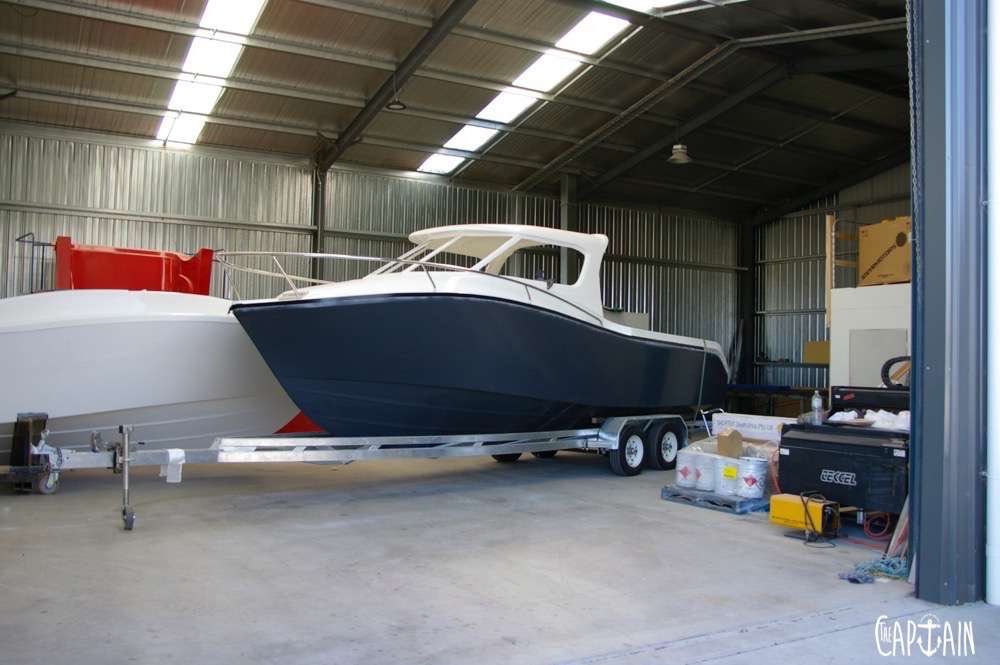
We end up with a laminate that’s exactly 30 per cent resin. It’s a more scientific way of doing it (than hand-laid or chopper-gunned) and the dividend is that it’s super strong and light.”
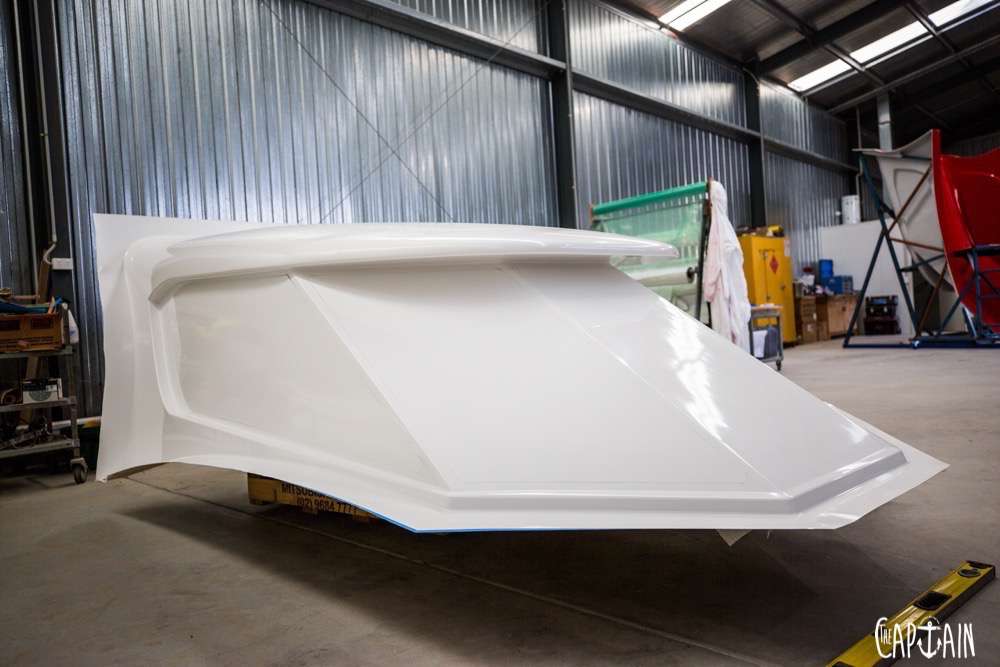
In keeping with the high-tech approach, Roger uses Thermo-Lite composite under main fittings for reinforcement. “Anywhere there’s a screw there’s Thermo-Lite. It’s easy to work. The majority of the sandwich laminate is Core cell. It’s a high-density foam product with extremely good structural and laminating properties.”
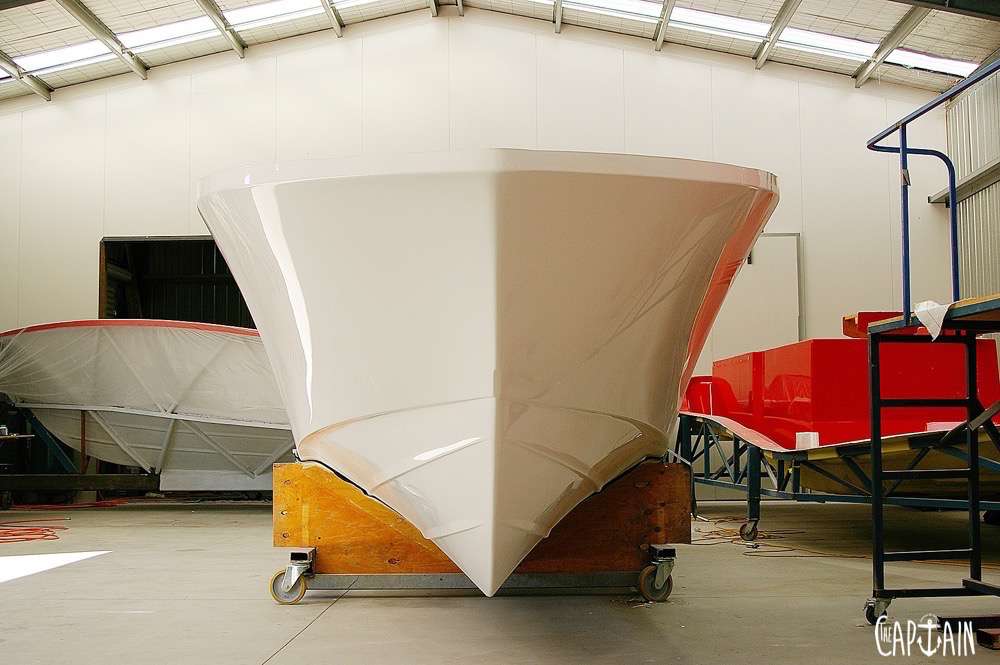
In real terms, the lightweight construction lets Roger create a large, but relatively light boat, bolt 600HP out the back and stuff it with five blokes and game-fishing gear in. And it feels more like a 17-footer than a 27-footer. If it gets a bit gnarly offshore, pump it full of weight — 450L of keel weight, 500L of fuel — and just send it.
ACCIDENT BY DESIGN
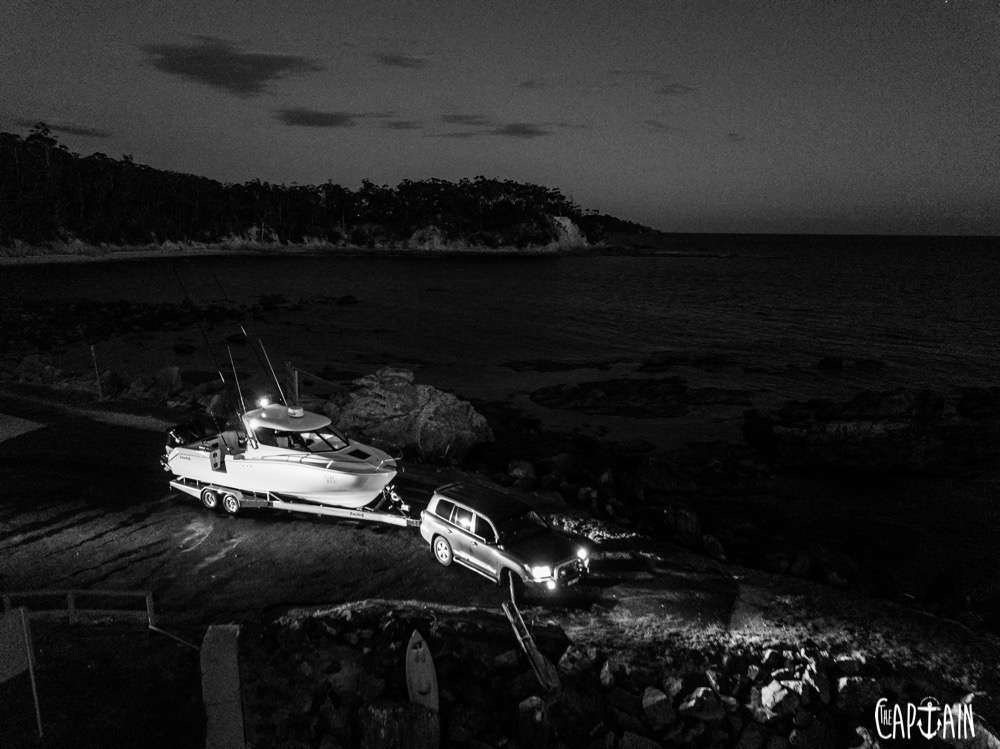
When Roger set sail with the Veitch project, his only parameters were that it had to have a 2.5m beam and weigh less than 3.5 tonnes on the trailer. After dozens of computer models, Roger landed on 27 feet (8.2m). A 22ft (6.7m) version made it to the timber plug stage, but he reckoned it had too much rocker and not enough straight section so he chopped the back out and added an extra 1100mm.
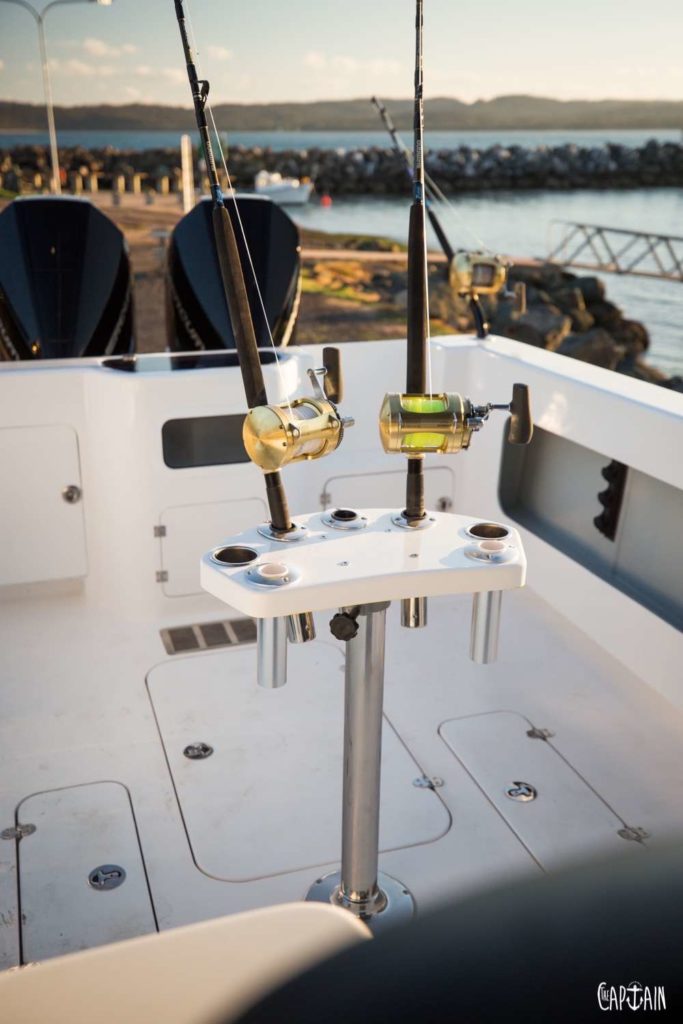
“The boys helping out with the build were pretty annoyed with that,” Roger chuckles. “They came in one day and it was almost ready to glass, then they came back two days later and it had an extra metre.” He found the right dead-rise at 25.5 degrees — with a bit of inspiration from the rum-stained pages of The Captain (issue #5).
Roger picks up the story. “The plug was originally 22 degrees at the transom, sitting beautifully in a computer-cut jig. We were just about ready to glass it when the Captain’s Battle of the Big Vee issue came out. I read it in the office, then walked straight into the factory and told the manager, Tim, it had to be tougher. So we sawed the boat straight down the keel, jammed bits of four-by-two under the keel and beefed the dead-rise right out until it looked good. Months later, we measured it and were surprised to see we’d landed on 25.5 degrees.”
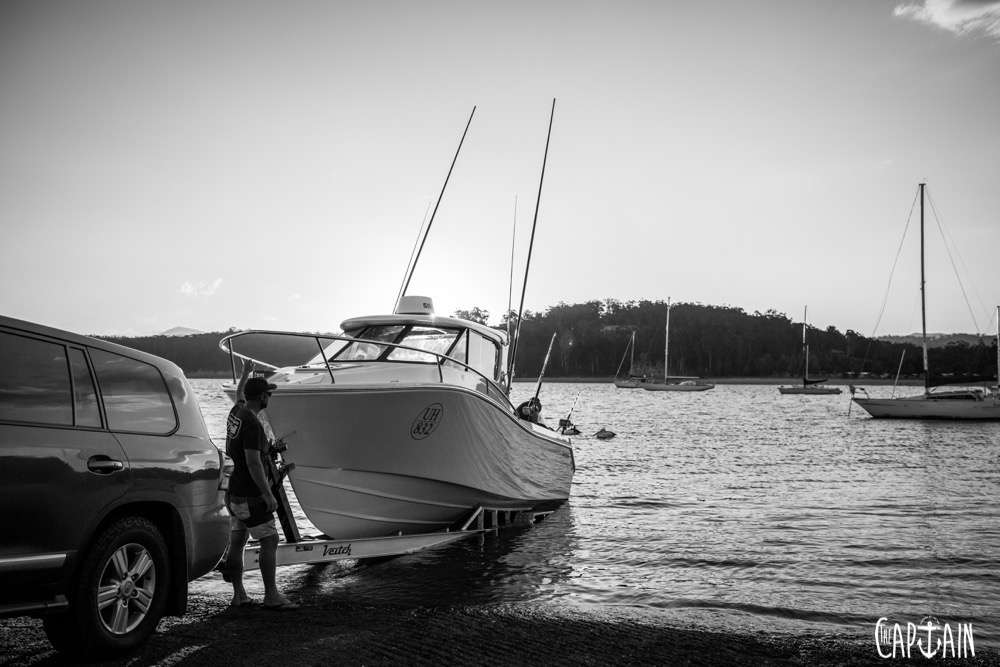
The aggressive dead-rise extends right up into the bow at more than 50 degrees, complemented by a large flare. Roger says it’s more of a wedge than a traditional Carolina flare. “I wanted to create more buoyancy in the top section of the boat to keep the bow up when diving into big swells. It keeps things pretty dry, particularly running down sea. Roger says it also helps eliminate yaw (side-to-side movement of the bow and stern of the boat). The Captain thinks that sounds suspiciously like sailing speak, but impressive, nonetheless.
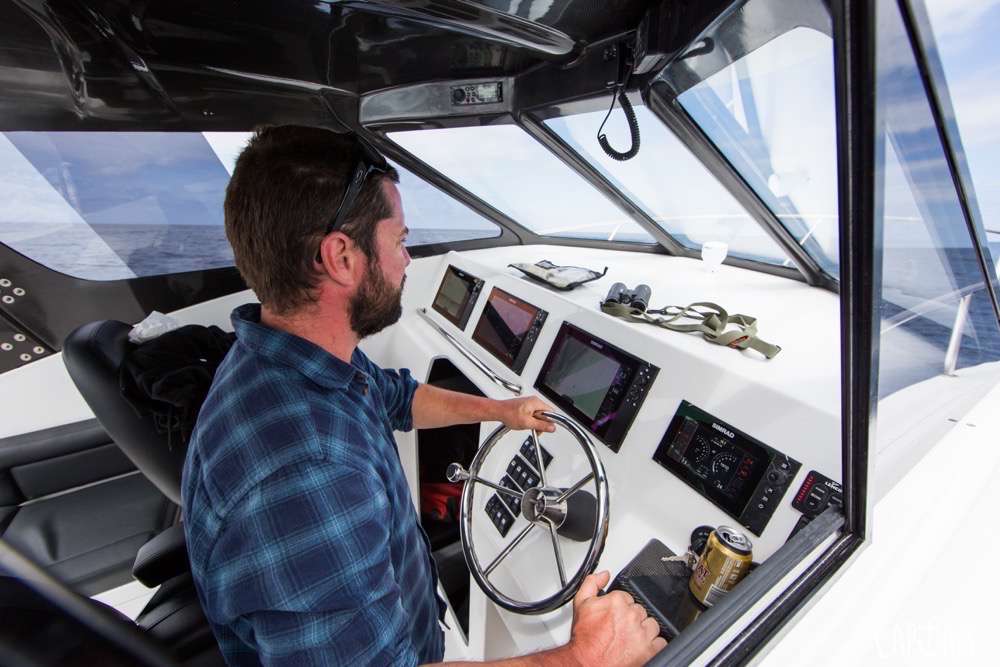
GUT INSTINCT
The Captain was somewhat surprised that gut instinct would play such an important part in the Veitch design. Roger explains why: “If it looks right, it generally is.” These wise words originally came from his uncle Andy, a prawn fisherman from Port Lincoln in SA, who designed and built many successful fishing vessels.
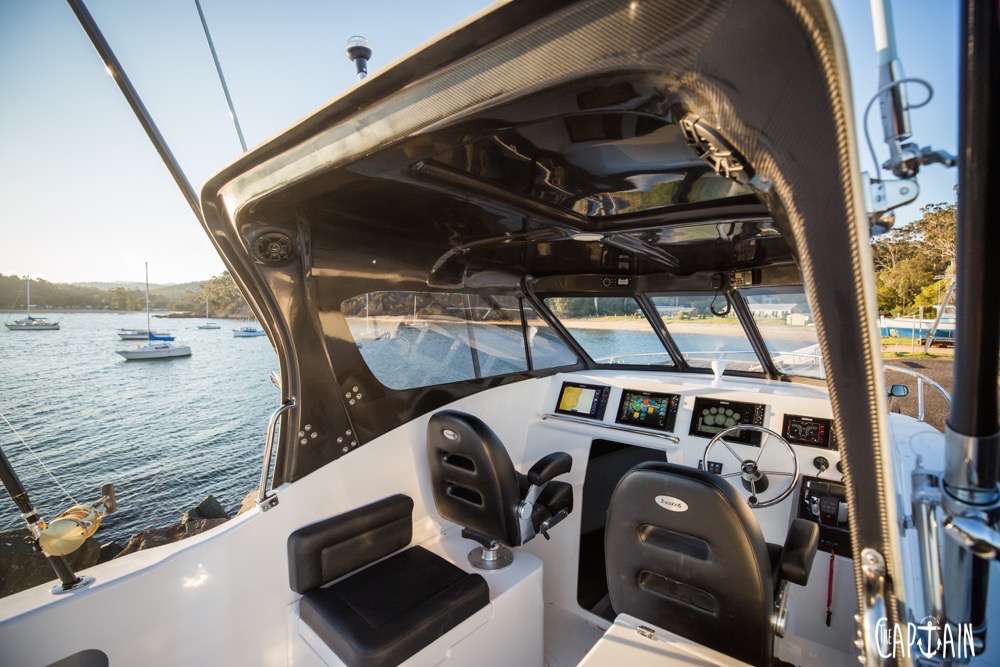
“We really compensated (for the large dead-rise) with wide, rounded-out reverse chines,” Roger continues. “They sit low in the water and give the boat a great sense of stability at rest and at speed.
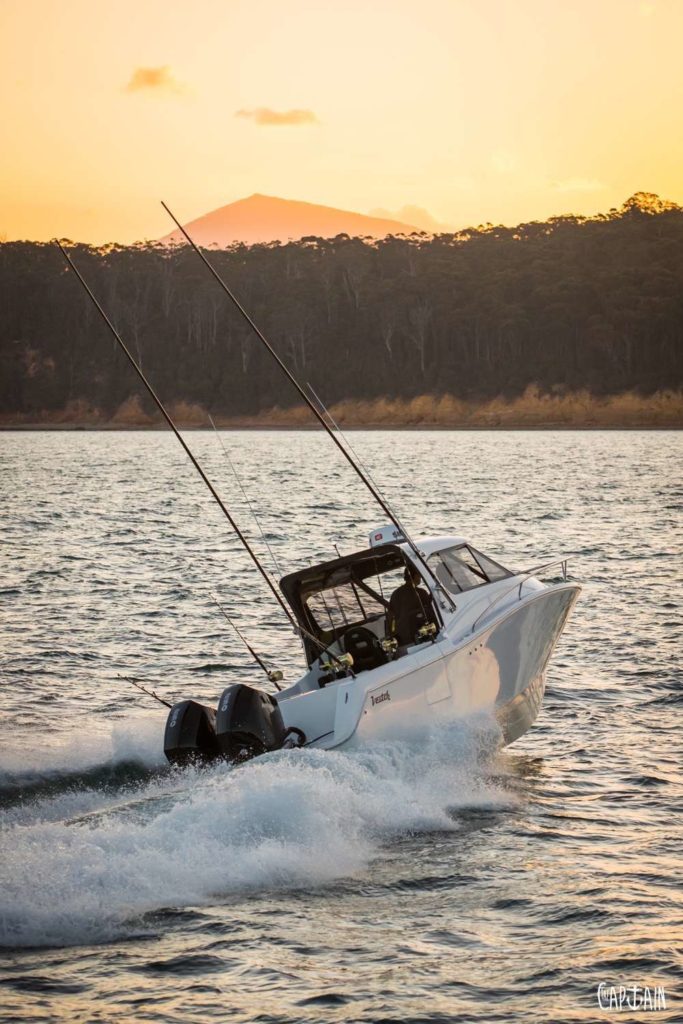
A lot of water is working its way up to those chines and back down. You can feel it work. The chines also help it turn on rails. It’s fast and predictable around corners.”
Handling is also fine-tuned with twin ballast tanks in the keel: 240L aft, 210L forward. Two Jabsco pumps push 54L a minute.

“It gives you the ability to change the characteristics of the ride in different conditions,” Roger says. “You can make it ride how you want. So we did!”
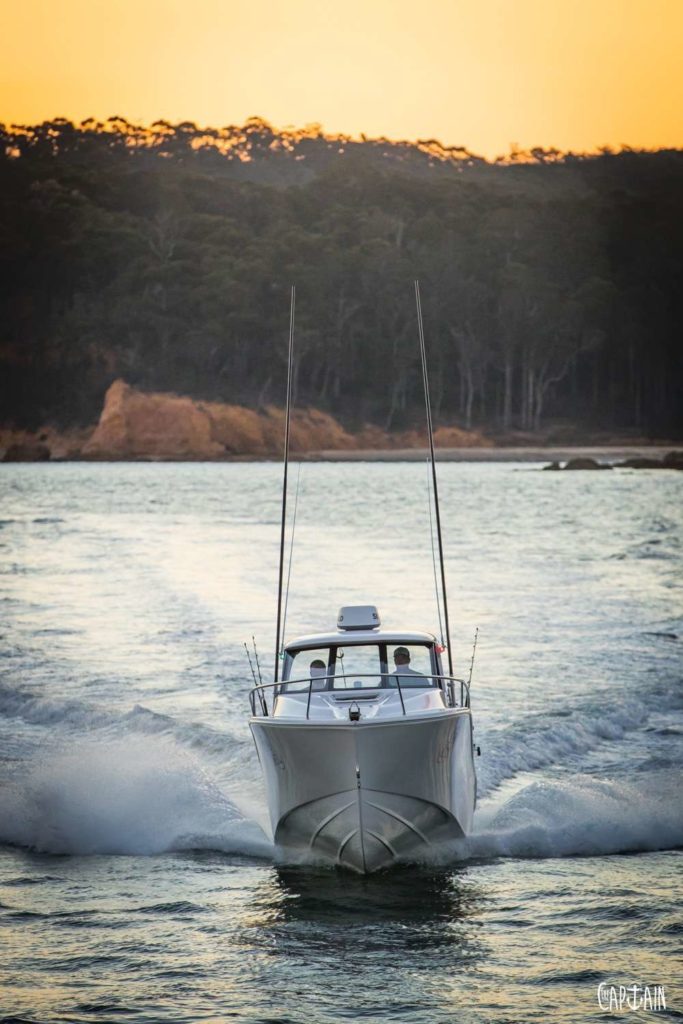
BLACK POWER
Pushing Roger’s demo model along is a pair of V8 250HP Mercury Verado outboards. This was The Captain’s first blat with the new V8 Mercs. The 4.6L, 32-valve, dual-overhead camshaft power head replaces the previous six-cylinder model that was noticeably heavier and thirstier.

“We topped out at 52 knots, unladen, in flat water,” Roger continues. “Coming back from the shelf, with ballast tanks full and five blokes on board in a 1m–1.5m trailing sea, we did 42 knots comfortably with hands off the steering wheel. Seeing the boys standing there with hands off the steering made me happy.

Yeah, there were a few high fives.” (Note: The Captain does not officially condone ‘hands-off’ boat operation.)
Roger has since changed to three-blade props, taming the acceleration. Note: This is probably a good thing as it was on the edge of shit scared country — The Captain.
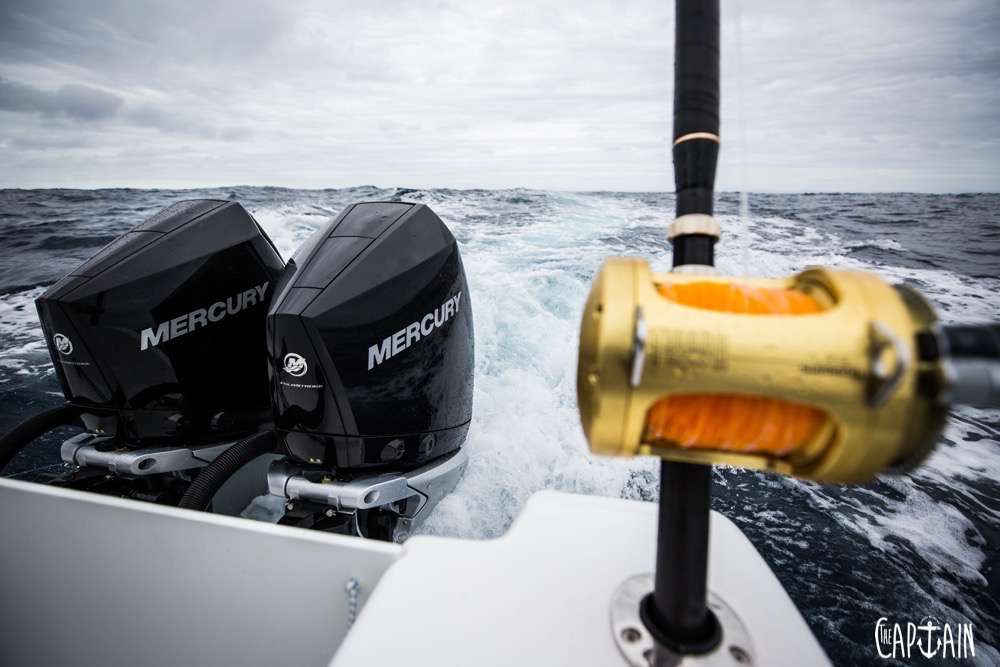
Travelling into a 15-knot headwind at 4000rpm, the Veitch 27 does 30 knots, burning 63L per hour, combined, proving that the fuel efficiency is everything Merc promised.
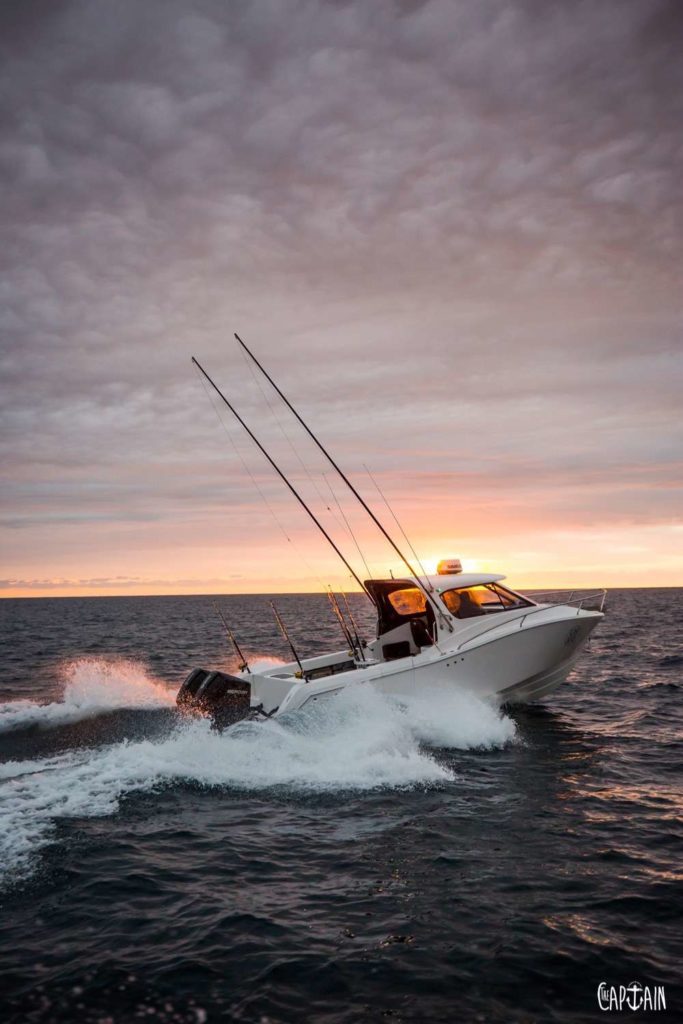
Hopefully the boys in black can keep the recall gremlins at bay.
BACK IT UP, BUDDY
As a large modern game boat, the Veitch 27 has been designed to go backwards in a hurry — for chasing game fish. The transom features a step akin to a swim-end on a barge. It’s integrated as one piece with big round corners. Roger designed it with integrated trim tabs sitting just outside the main strakes.
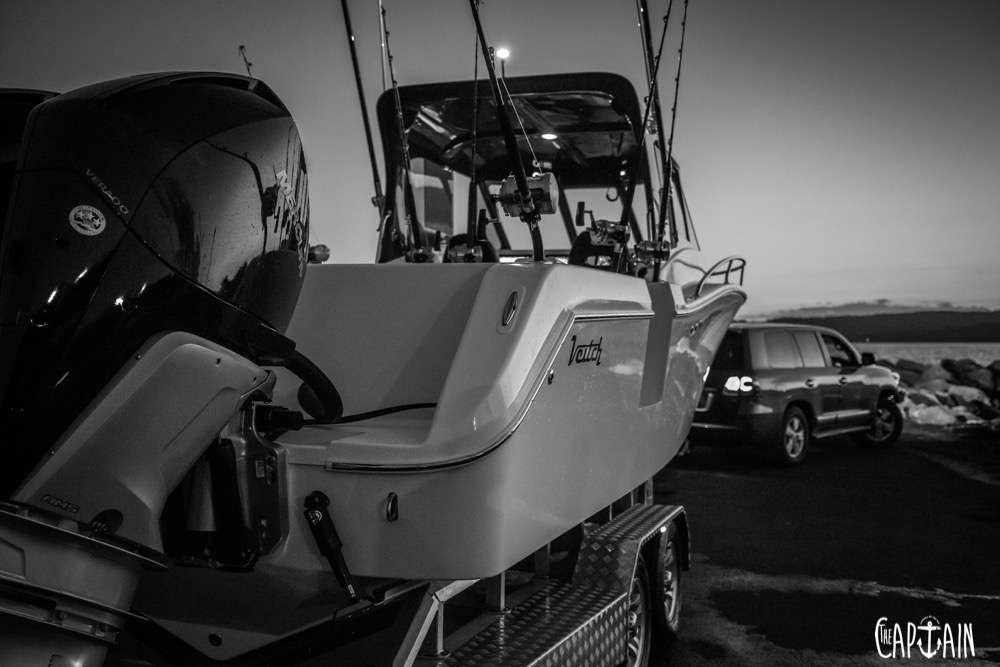
A diesel motor can drop straight in, with the props tucked neatly into the transom. He reckons a diesel will take the 27 to another level — with good cruising speed, great fuel economy and a massive cruising range. It’ll also reverse up like a boss and you won’t lose your leader in the props.
PUT A LID ON IT
Roger says the cabin design was a painstaking process. “It was really important to make the inside of the cab as spacious as possible. I started drawing hardtops — I must have drawn 16 or 17 of them. It’s a hard thing to make functional and look good at the same time.
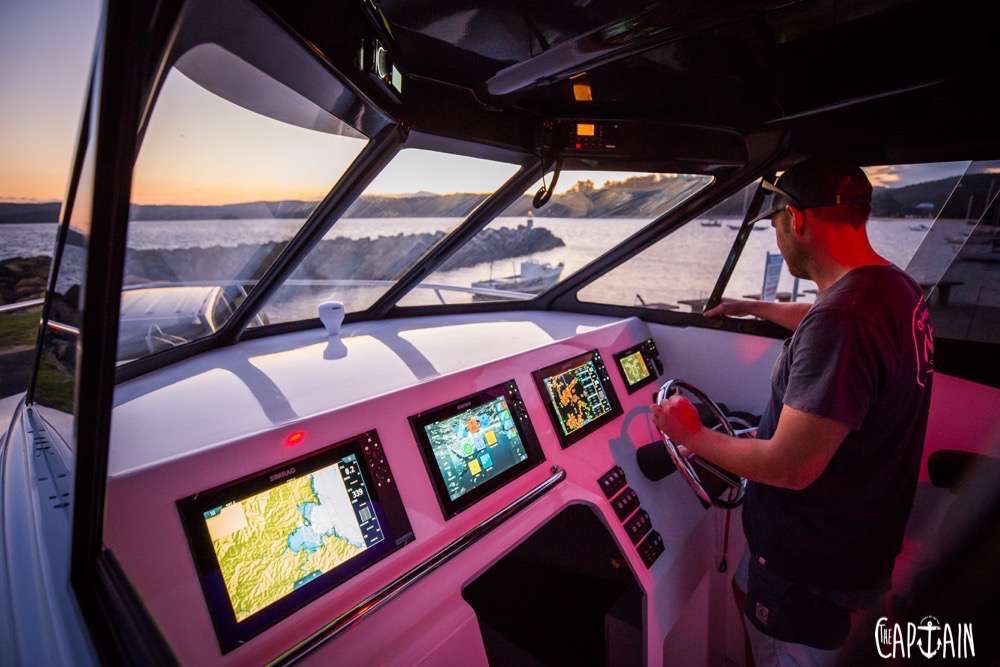
I started out with big moulded glass sections and couldn’t get them produced, so went back to the flat panels that I’m now happy with. It’s toughened laminated glass, but replaceable in the worst-case scenario. The oven-baked ceramic glass attaches directly to the hardtop without the need for aluminium frames.”
GLASS HALF-FULL
The glass construction techniques used by Veitch Boats.
1. RESIN INFUSION:
The hull, stringers, deck moulding (which includes the entire cockpit interior) and cabin top are all constructed using the infusion process.
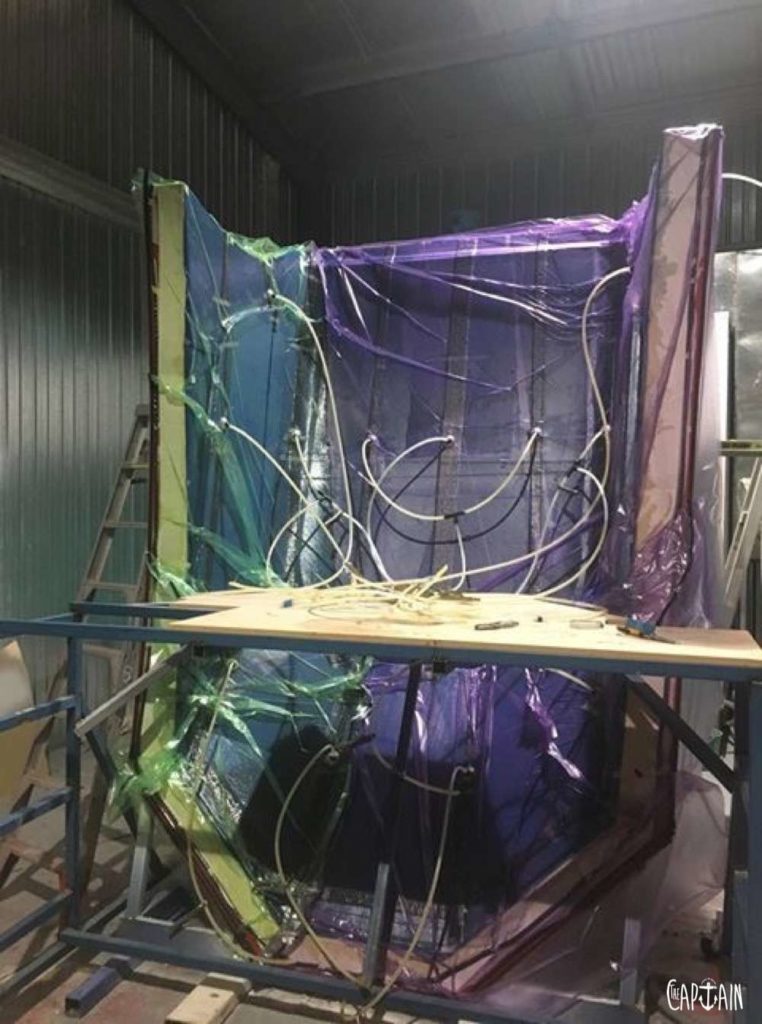
In a climate- and sound-controlled room, the mould is lined with dry multi-axial laminates and the core sections are sandwiched between equal layers of laminate then covered with a plastic bag that is sucked down to equal pressure. Vinylester resin is then pumped throughout the laminate via the vacuumed bag.
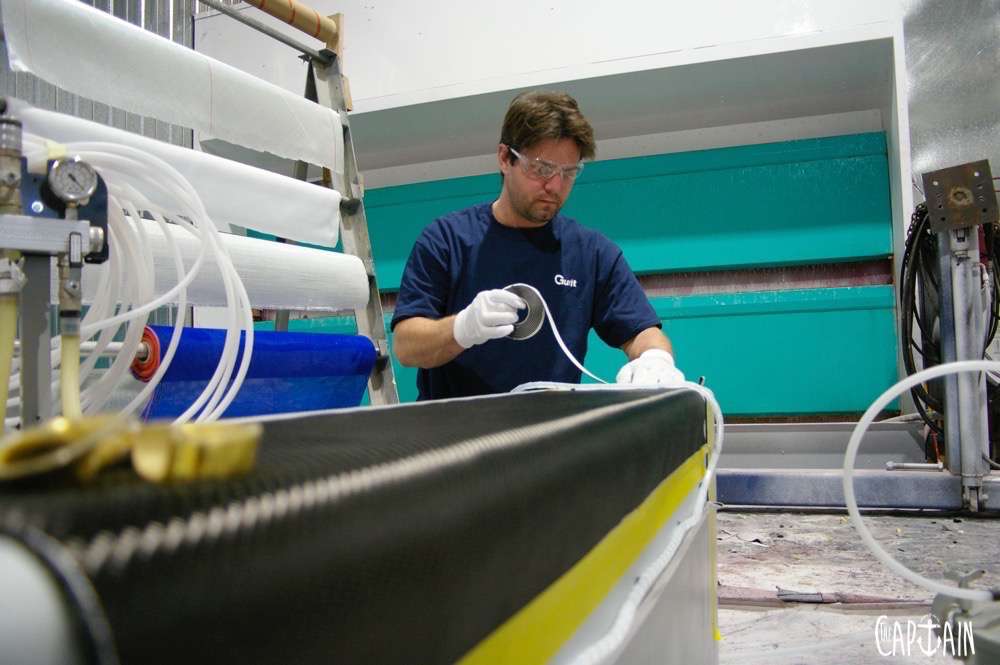
It’s a specialised technique that takes years to perfect. It’s also expensive. As Roger says, “One per cent error equals 100 per cent failure.” It’s more popular in America due to the demand and boat building volumes.
2. CHOPPER GUN:
After the gelcoat is sprayed into the mould, it’s skinned out with one layer of chopper gun for coverage and efficiency. The mechanical gun cuts the glass to length, simultaneously mixing it with resin and catalyst. The resin on the Veitch boats is a high-tech DCPD vinylester blend to give a special surface finish before it’s bagged. Roger says, “It’s an efficient and proven process in many good Australian boats. Operating a chopper gun is a specialised skill and good equipment is not cheap.”
3. HAND-LAID:
The stringers and secondary components are connected to the main structure using hand-laid glass. Roger says hand-laid is ideal for fine detail around complex components. His process includes using double bias strips of multi-axial between two layers of 600g chop, wetted out and consolidated with roller. “It’s a tried and true method that allows you to easily vary the amount of glass used”. We guess that makes the Captain’s Nub-Tub basically a 15ft Veitch boat, yes?
SIMRADICAL FIT-UP
On the electronic front, Roger says, “I wanted a big dash with no digital displays in front of the windscreen. It was really important to start using all the latest technology and get glass bridges in the boat without it being in the way when you’re actually trying to see to drive the thing.”
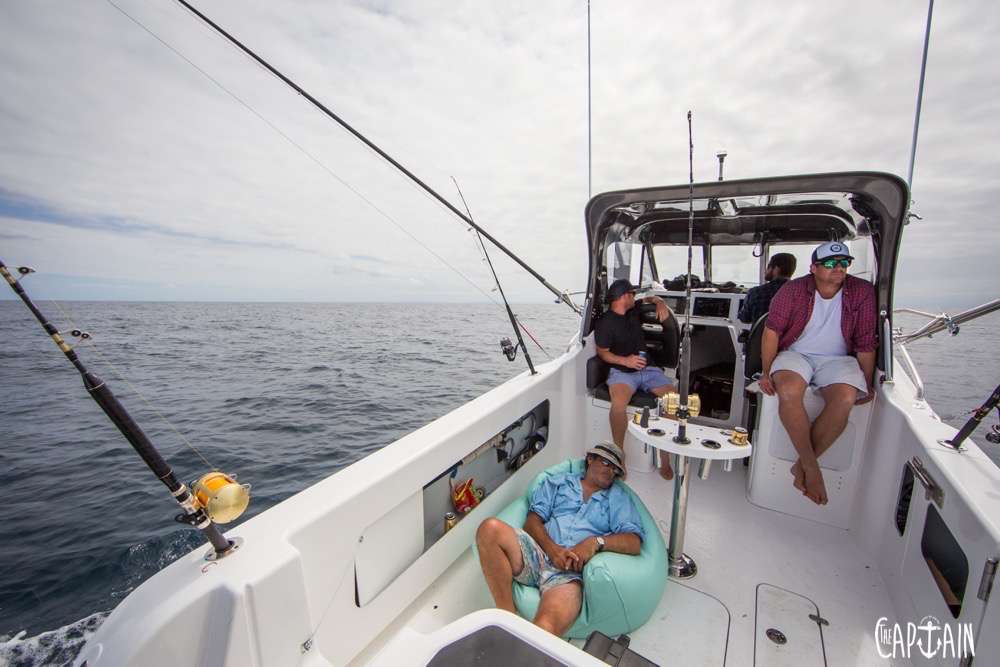
The big dash features three Simrad NSS12 Evo3s and one nine-inch screen running the Vessel View. There’s room for 16-inch screens — or even up to 19-inch. The demo model is running the BM175 high-wide and 175 low 1kW transducers.

“Everyone can see what’s under the boat and what’s coming up,” says Roger. “The boys loved it yesterday. We were reading bottom in 800m and the top 50m on the other display. Everyone was looking at the same information, getting excited at what was on the screen.” Roger also fitted a 4G radar.

“It’s often foggy through winter in Gippsland and you need to trust where you’re going. Having that 4G overlay in your charts really helps. You can see every buoy and every mark. Your chart isn’t saying you parked the boat next to the bakery when it’s actually at the end of the jetty. On our offshore sojourn, it was a grey, overcast day. We picked up some long-liners off the shelf on the radar. We knew exactly where the fish were, where we’d been before and where we wanted to go. At the same time, we were marking up new fish.”

Admitting he’s no digital expert, Roger says, “The whole menu system is really easy to use. I’m pretty new to it, but within five to 10 minutes, I’d worked most of it out.”
TIME TO THANK
By Roger’s own admission, it’s been a tough project. He thought it’d be wrapped up in two years. “I’ve pushed my family and my friends, everyone around me, but I managed to get there. It’s been worth it, but it’s taken a toll. I’d like to thank my wife, Eleesha, for supporting me and looking after three kids while I’ve been in the shop for months on end. I live on Raymond Island and I’ve been catching the first ferry at 5am and the last one home at 11pm.
“Factory manager and second in charge Tim Pool has been there from the design stage. He’s an excommercial fisherman, a gun boat driver and a highly competent set of hands in the factory. “Greg Fenwick, for helping develop the trailer. He’s a freak of fabrication, who helped on the boat build process and the trailer in particular.
“Gamefishing guru James Coil, and Jon Carter, for giving the Veitch a clever gamefishing personality.
“Riviera Marine Centre in Paynesville, which supplied and fitted the new Verados.”
FISHIE FEATURES
Roger tapped some of the local gun fishos on the shoulder and included some clever gamefishing touches in the cabin. Behind the driver’s seat there’s a fridge, sink and chopping board. It’s also somewhere you can rig baits in bad weather.
There’s great accessibility to the cockpit for getting on and off the boat and bringing in big fish. A big dive door on the starboard side and a transom door give you a lot of flexibility to take a leak and move stuff on and off the boat.
Being an ideas man, Roger developed his own trailer with the help of Greg Fenwick, from Lariat Welding & Fabrication in Bairnsdale. “The trailer is a complex structure that makes it very rigid. It’s custom-designed to suit the Veitch boats.”
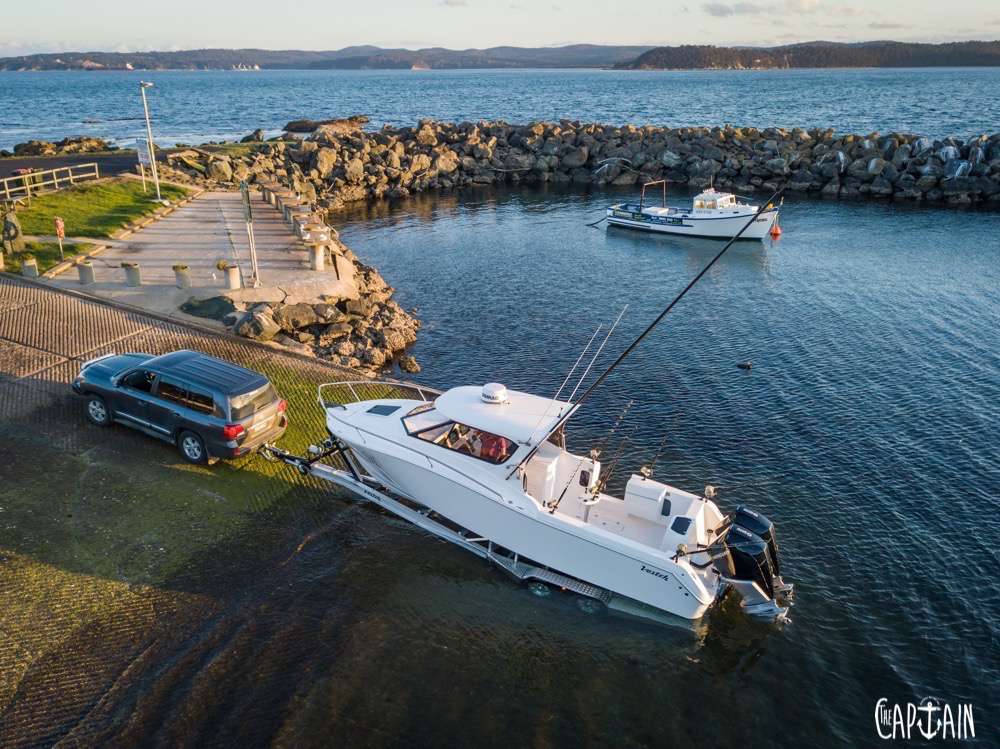
The first model was steel, but he’s since converted to aluminium for a 250kg weight saving that he can put back into the hull. Roger is also working on an air bag suspension option.
WHO WANTS ONE?
Roger reckons the Veitch 27 will appeal to guys with bigger boats who want to get out there, go faster and not have the dramas of pushing a 40-footer from bite to bite. It’ll also suit guys coming out of smaller boats who still like to drive hard and fast, but want big game-boat tricks. “If someone wants a sexy, practical gamefishing boat that nobody else on the water has, then this is your boat.”




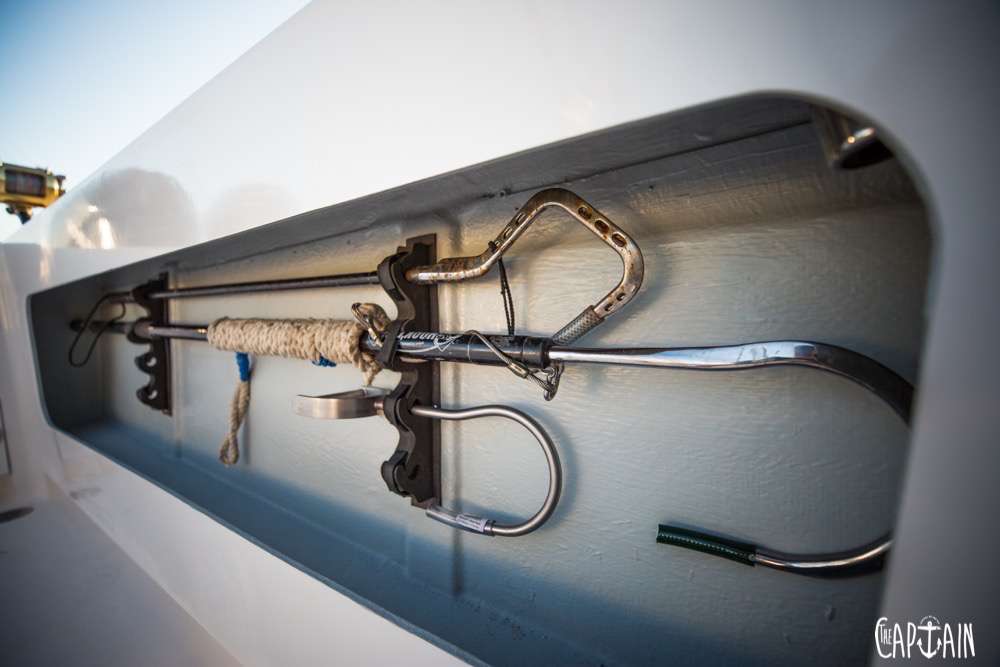

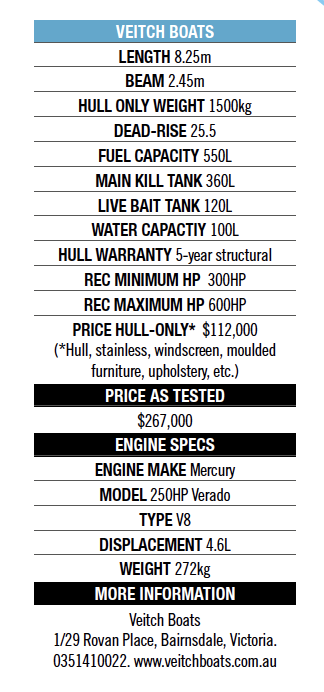
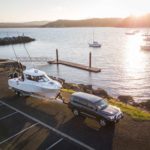
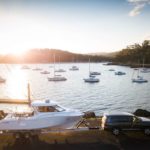
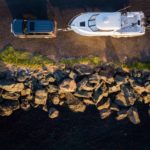
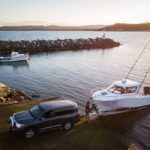
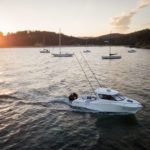
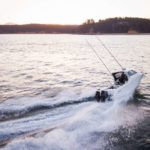
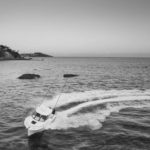

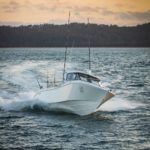
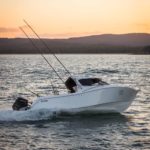
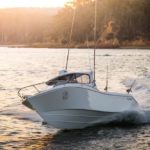
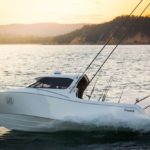
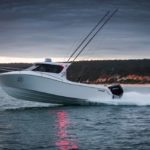
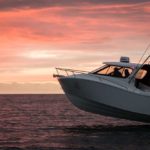
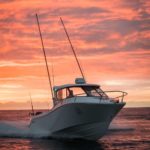
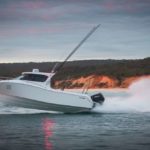
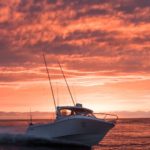
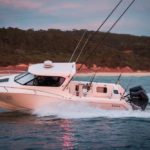
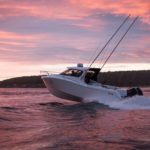
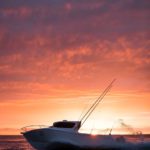
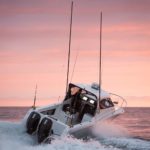
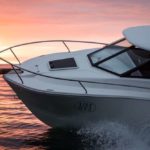
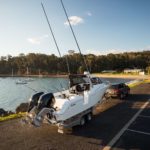
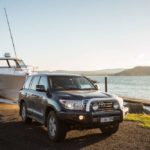
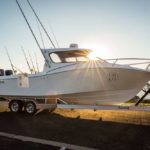
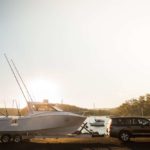
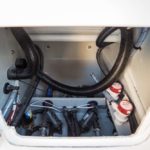
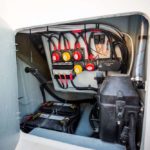
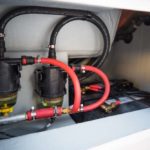
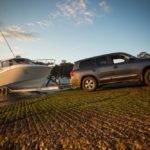
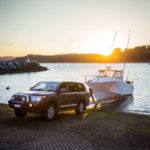
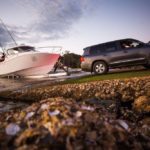
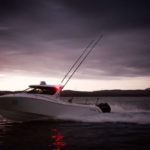
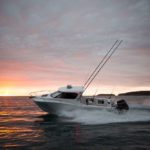
Recent Comments